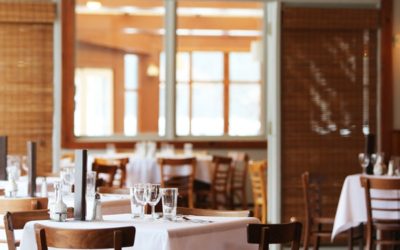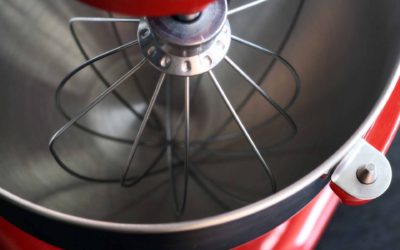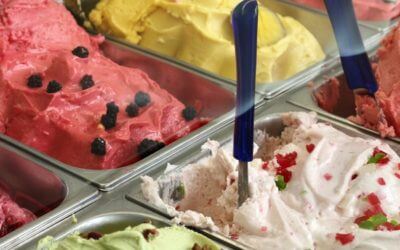Tipping: A Restaurant Controversy
June 9, 2017When it comes to tipping or no-tipping policies in restaurants, there are strong feelings on both sides.
While many restaurants have implemented no tipping policies, others are strong proponents for tipping. Still others aren’t sure which policy is right for their restaurant.
Restaurateurs like Andrew Hoffman want to phase out tipping from restaurants, referring to it as an unhealthy practice. Other stakeholders in the industry, like Kenneth White, are unopposed to the practice of tipping, asserting that it has become part of the dining culture. With the raging controversy on this subject, looking at the pros and cons of tipping will help provide some answers.
Let’s start with the pros. The strongest argument for allowing tipping in a restaurant is the excellent treatment provided to customers, with the tip serving as an incentive. This idea is strongly rooted in the American culture, as most diners see tips as part of the system. In fact, tipping is an age-long practice that dates back to the 18th century.
Employees in such restaurants typically accept lower wages, with the expectation that they will make up for it with the tips they will received. This provides a strong incentive for employees to provide excellent service in the hopes that appreciative customers will be generous with their tips. In the end, the staff can earn far above the minimum wage, while helping create an experience that keeps your customers coming back.
As a restaurant manager, you can also benefit from the tip because many customers make calculate the tip they will give based on a certain percentage of their bill. This motivates servers to upsell the menu in the expectation of a bigger tip. In this way, they are boosting your profits and increasing their own income at the same time.
However, there are limitations to allowing tips in your restaurants, which you must consider from the outset. Tipping can affect the staff retention rate of your restaurant due to the unstable income of the staff. They will be relying on tips which may or may not come. This can push out staff who want a more stable source of livelihood.
Even though tips often boost morale, they can sometimes have the opposite effect. When a server tries hard to please a difficult customer who is impossible to satisfy or who just doesn’t believe in tipping, or when customers choose not to tip because of things completely out of the server’s control (like a mix-up in the kitchen, for example), servers can become frustrated and less motivated.
There are also many different opinions about how tips should be split amongst the different restaurant staff, and this can become a source of resentment if some of your employees feel the tip splitting strategy is not fair. All of these factors can contribute to less motivated, less cheerful staff who will leave sooner and who won’t provide top service to your customers.
As a restaurateur, you are at the liberty of determining the policy in place in your restaurant. Weigh the options and decide which is important to your business growth and sustainability.
5 Keys to Creating the Perfect Restaurant Seating Areas
Restaurants are about so much more than just food. From the setting and layout of your restaurant to your choice of colors, it takes a lot more than an appealing menu to keep diners coming back for more. When setting up your restaurant, booths and chairs are important...
5 Essential Buying Tips for Your Next Food Prep Work Table
The right foodservice equipment is pivotal to the efficiency of your kitchen. One of the most important types of foodservice equipment for any kitchen is the work table. With limited room on countertops available for your food prep needs, the cooking process can drag...
Tips for Keeping Your Commercial Sink Sparkling Clean
Your commercial kitchen, just like your personal kitchen, must be kept clean at all times. With all of the cooking and food processing you do, it is inevitable that your sink gets messy. Cleaning up your commercial kitchen is incomplete without proper cleaning of your...
Food-Cutting Secrets to Beautiful Dishes
In the restaurant industry, presentation is often said to be just as important as the food itself. Using the right knowledge, skills and restaurant supplies, you can incorporate creativity into your presentation, making guests feel that they are getting something...
Top Space-Saving Tips for Commercial Kitchens
Top Space-Saving Tips for Commercial Kitchens Space is always an important consideration when setting up a kitchen, and this is even truer for commercial kitchens. With a strong focus on functionality and the kitchen supplies that meet the needs of your commercial...
5 Ways to Get the Most Out of Your Mixer
No one wants to eat off of dirty or tarnished silverware. A stand mixer is a highly useful piece of kitchen equipment to invest in. Although this type of kitchen equipment does not usually come cheap, it can last a lifetime when properly cared for. Despite all your...
Restaurant Prep Tool Selection Simplified
What’s a restaurant kitchen without high-quality prep tools that can withstand the pressure of frequent use? Whether you already have a restaurant you’re running, or you’re just planning to launch one, one vital factor that could make or mar your business is how you...
Beginner’s Guide to Choosing a Commercial Ice Cream Freezer
Ice cream is a delicious and appealing desert treat for everyone, young or old. Having made the decision to sell ice cream to your customers, whether you have a restaurant, convenience store, or specialty ice cream parlor, it is time to begin stocking up on the right...
How to Choose the Right Kitchen Scales for Your Restaurant
A food scale is an essential item in every restaurant’s store of kitchen supplies. Designed to take the guesswork out of food measurement and maintain consistent food serving sizes, food scales are indispensable kitchen supplies in the commercial kitchen. With such a...
Beer Chilling Systems: Which Type Is Right for My Restaurant?
A refrigeration unit is integral to the functioning of any restaurant. Beers are best served cold - there’s no questioning that! But which beer chilling system is the best? From reach-in coolers to glycol chillers, a beer chilling system is an important piece of...
What Equipment Will I Need to run a Food Truck?
There’s a lot of planning that goes into starting your own food truck business. Before you hit the road with your delicious food offerings, you’ll need to fill up your truck with all the right foodservice equipment. Considering the lengthy list of possible items to be...
8 Types of Food Thermometers: What You Need To Know
Food thermometers are essential restaurant supplies for your commercial kitchen. They ensure that foods prepared in your commercial kitchen are cooked to the right temperature and held at that temperature for as long as necessary to kill any harmful bacteria. This...
How to Identify the Best Food Processor for Your Needs
Highly versatile and extremely efficient, food processors are designed to take away the hard work from repetitive kitchen activities. This type of cooking equipment can quickly become an invaluable tool in your kitchen. From chopping, to shredding, grinding, mincing,...
6 Keys to Choosing the Best Chafing Dishes for Your Restaurant
The chafing dish, also known as the chafer, is an essential piece of restaurant equipment for any establishment that wants to keep food hot. This type of restaurant equipment gets its name from the French word, chauffer, which means to heat, and it’s easy to see why....
Turning up the Dial on Commercial Fryers: How to Choose One for Your Restaurant
Fried food is a well-loved favorite. This is a fact. It also makes a fryer an important piece of equipment to have in your commercial kitchen. Just consider how many appetizers and sides require frying: onion rings, French fries, and fried green tomatoes are just a...















